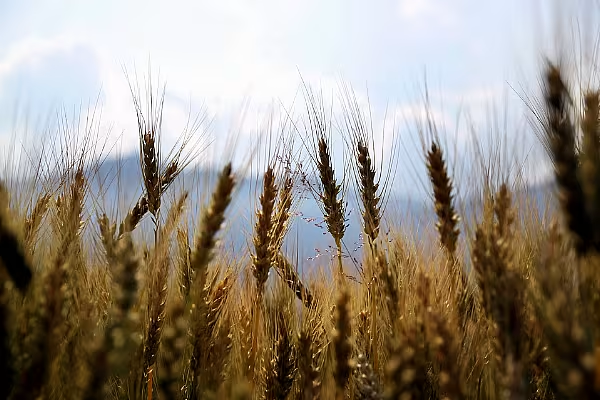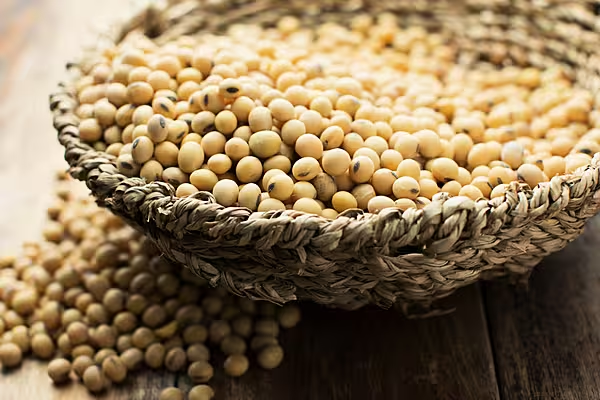US farmers expanded seedings of winter wheat this autumn for the first time in eight years as strong demand and dry weather in several producing countries fuels higher prices for the grain, farmers and analysts said.
Winter wheat, seeded in the Northern Hemisphere in autumn for harvest in June, is the first cash crop to be planted since an agricultural commodity price rally began in August.
A Welcome Relief For Farmers
The rally is a welcome relief for farmers after four years of global surplus grain stocks that have kept prices low and hobbled the US agricultural economy.
Tightening grain supplies and demand from China have lit a fire under Chicago Board of Trade corn, soy and wheat futures. CBOT soybeans are at a four-year high and wheat is near a six-year top at around $6 a bushel. The US Agriculture Department (USDA) says there could be record acreage of all major US crops next year.
David Justison, a third-generation farmer who grows wheat, corn and soybeans in Montgomery County in south-central Illinois, planted 1,200 acres (485 hectares) of winter wheat this autumn, up from 900 acres last year.
"It's the best price I have seen in a few years. Six-dollar wheat is something that got my attention," Justison said.
USDA this month projected US total wheat seedings for 2021, including winter and spring wheat, at 46.0 million acres, up from 44.3 million acres in 2020/21.
Export Demand
Additional US wheat would help meet export demand after countries around the world stocked up on grains to ensure food supplies during the COVID-19 pandemic, and ensure flour for baked goods and pastas next year.
Domestic demand for wheat and flour has held roughly steady from a year ago, USDA data shows, even as the pandemic sent millers and bakers scrambling to adapt to consumers eating more meals at home instead of dining out. Grocery stores faced flour shortages this spring due to an uptick in demand for small bags of flour for home baking.
The US government will not release a farmer survey specifically on winter wheat plantings until January. But private analytics firm IHS Markit Agribusiness this month forecast US winter wheat plantings were 31.5 million acres, up 3.6% from the 30.4 million acres seeded a year ago, according to an IHS client note seen by Reuters.
US wheat export sales commitments for the 2020/21 marketing year begun June 1 are up 10.5% as of 12 November from a year ago. China, an irregular US wheat buyer, has booked 1.7 million tonnes of US wheat, up from 194,063 tonnes last year.
The Sorghum Option
While plantings expanded in Plains states like Kansas, the top US grower of the hard winter wheat needed for bread, the size of the crop ultimately may be limited by dry conditions.
But Plains farmers have another option to turn a profit this year. They could tear up the wheat crop and plant sorghum, a drought-tolerant grain planted in the spring that is used as an alternative feedstuff to corn and is seeing strong demand from China.
Sorghum, also called milo, is grown in Plains wheat states including Kansas, Oklahoma and Texas. Cash prices have been historically high in recent weeks, reflecting robust export demand from China. US sorghum sales commitments to China totalled 3.0 million tonnes as of 12 November, up from 123,000 tonnes from this time last year.
"If we do see wheat ground that is not planted right now, or if it has a poor stand going into the winter, it's easy to see acres get plowed up and shift from wheat to milo," said Mike O'Dea with StoneX Ltd, a commercial grain broker.
The export market for sorghum is dominated by China, which uses it for animal feed and baiju liquor. China has been a huge importer of corn, sorghum and other grains in recent months as it fights food inflation and rebuilds its massive hog herd following a devastating swine disease. Unlike corn, China has no low-tariff quota on sorghum imports.
"Sorghum ... is helping a lot of people get back into decent shape, fiscally speaking," said Wayne Cleveland, executive director of Texas Sorghum Producers, an industry group.













